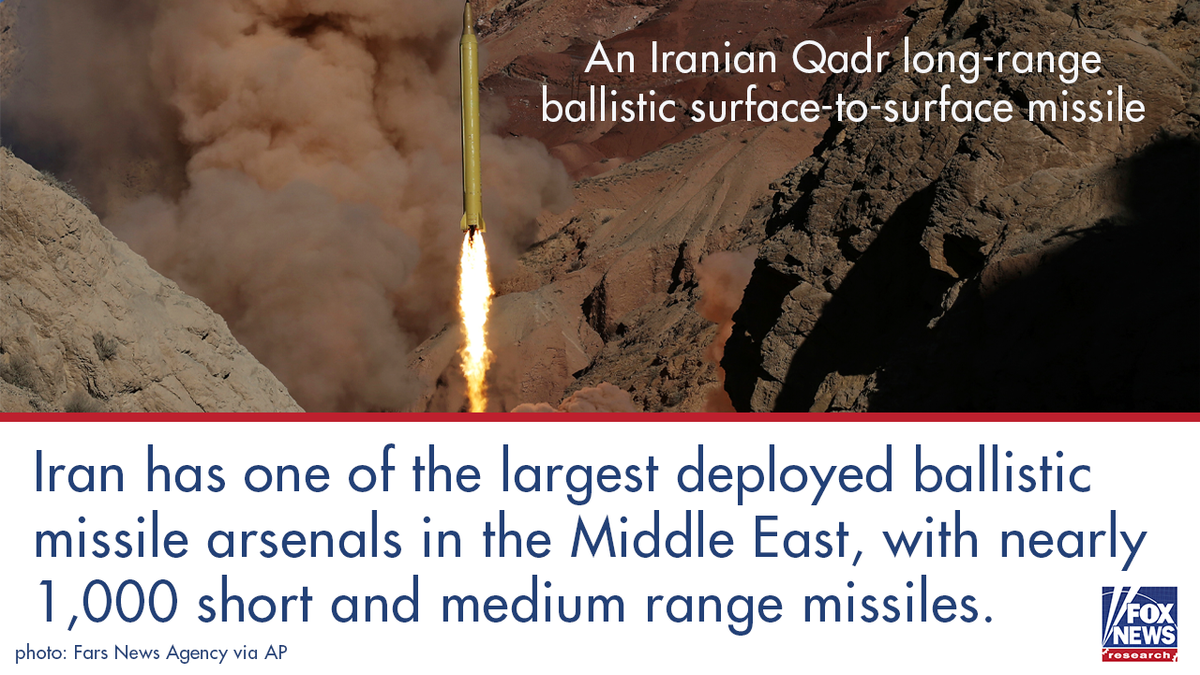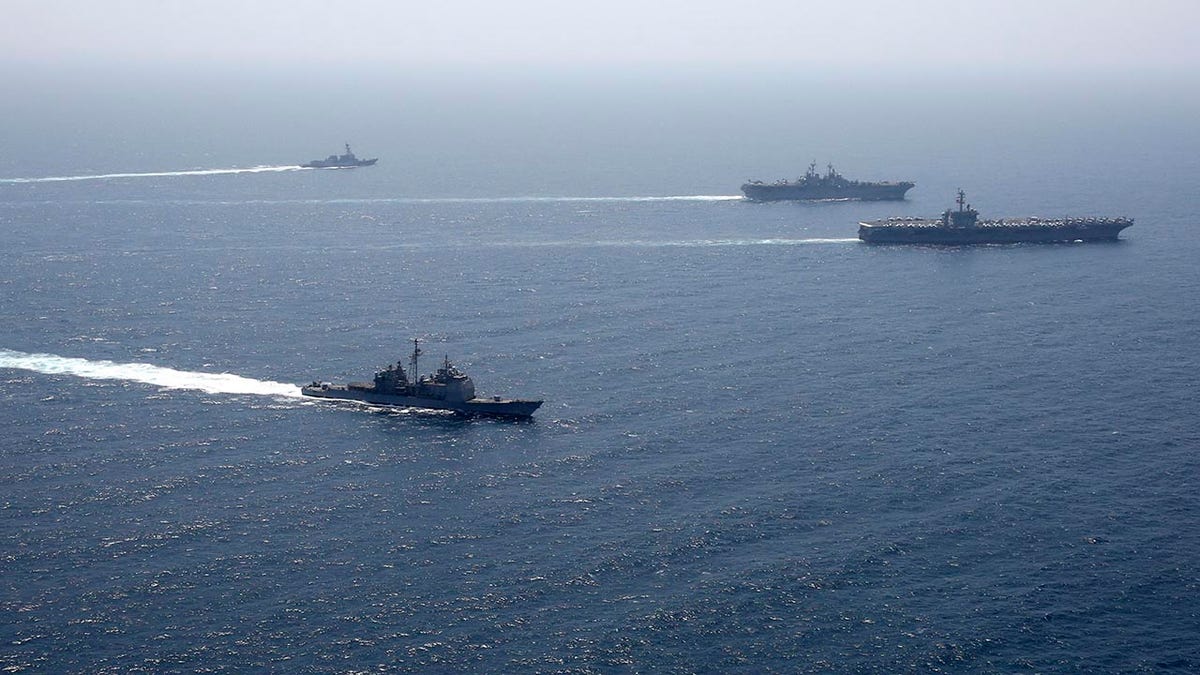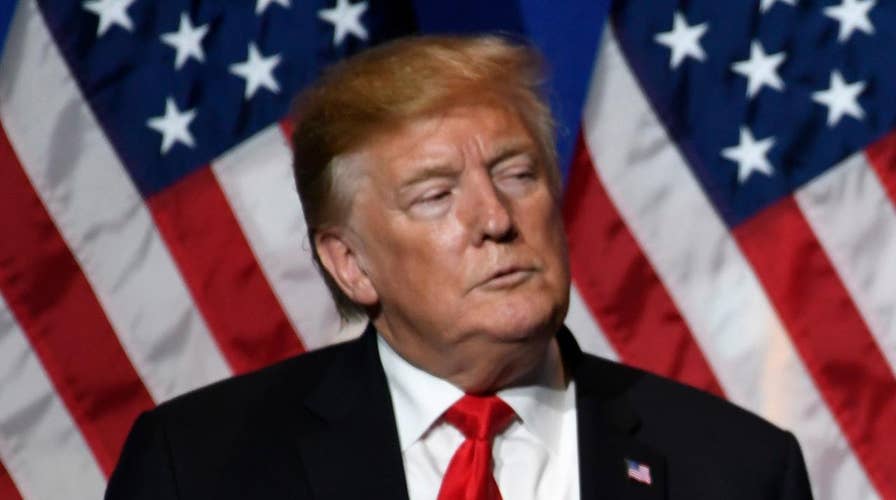Congress criticizes the Trump administration over not being briefed on the US-Iran conflict sooner
Former Treasury Department terrorism finance analyst Jonathan Schanzer says senior members of Congress should be briefed on the growing tension between the U.S. and Iran.
The possibility of a military confrontation between the United States and Iran is rising as U.S. officials claim an increased threat risk to troops in Iraq and Syria and shipping lanes in the Persian Gulf.
The Trump administration is citing unsubstantiated intelligence that Iranian-backed Shiite militias might attack U.S. forces in Iraq and Syria.
National Security Advisor John Bolton said the U.S. was “fully prepared to respond to any attack,” and President Trump warned Sunday: "If Iran wants to fight, that will be the official end of Iran. Never threaten the United States again".
Iran may not possess the same level of military might that the U.S. has as the world’s leading power, but Tehran can frustrate U.S. power projection in the region.
Iran has one of the largest deployed ballistic missile arsenals in the Middle East, with nearly 1,000 short and medium-range missiles, according to the Arms Control Association.
LARGE US WARSHIPS TRAIN TOGETHER IN ARABIAN SEA WITH EYE ON IRAN THREATS, NAVY SAYS
The Islamic Republic also commands an army of approximately 523,000 active duty personnel and 850,000 total military personnel and spends around $14.5 billion on defense. The United States, on the other hand, has 1.3 million active duty personnel and over 2 million total military personnel.
Washington also spends more than $600 billion on defense, more than China and Russia combined.
The U.S. also has control over the air and sea, with over 13,000 total aircraft compared with Iran’s 509 aging aircraft and 11 U.S. aircraft carriers while Iran has none.
Iran’s greatest asset by far, however, is its network of regional proxies and militias.
“When it comes to directly affecting U.S. interests in assets, the biggest targets for Iran are the U.S. military deployments in the Middle East, and trade. Iran has a lot of ways to directly strike at these, but when it comes to proxies best positioned to strike at these, the Houthi rebels in Yemen, the Popular Mobilization Forces in Iraq probably stand out,” Sim Tack, Global Military Analyst at Stratfor, told Fox News.
PETRAEUS WARNS IRAN TO 'BE VERY CAREFUL' AS TENSIONS RISE WITH TRUMP ADMINISTRATION
In Iraq, U.S. and coalition forces fought alongside Iranian backed Shiite militias known as the Popular Mobilization Forces (PMF) in the fight against ISIS. Iranian influenced units of the PMF in Iraq are composed of nearly 50,000 men, compared to the estimated 5,200 U.S. troops still stationed in the country.
The common enemy of ISIS loosely held the alliance together but with the Caliphate essentially destroyed in Iraq and Syria, the PMF could become a mechanism for Iran to oust foreign influence from Iraq and destabilize the country further.
Iran also plays a major spoiler role in the Syrian civil war by supporting Lebanese Hezbollah and propping up the Assad regime. Iran provides Hezbollah with an estimated $200 million a year and there are an estimated 7,000 Hezbollah militants in Syria operating directly under the command of the Islamic Revolutionary Guard Corps (IRGC).
It’s estimated that Iran has around 2,500 IRGC forces on the ground in Syria and supports between 8,000 to 12,000 Shia foreign fighters from around the region.
Houthi rebels in Yemen who seek to overthrow the internationally recognized government are another Iranian proxy and the group receives arms, including ballistic missiles, from the IRGC.
As the civil war in Yemen intensified in 2016, Iran stepped up its support to the Houthi’s and provided anti-tank guided missiles, sea mines, drones, rockets, and other military hardware. With Iran’s increasing influence in Yemen and the proliferation of military equipment, the Houthi’s can pose a significant threat to shipping in the Gulf of Aden and the Red Sea.
Amidst these heightened tensions, Acting Defense Secretary Patrick Shanahan presented a plan to the National Security Council that would send 120,000 troops to the Middle East in the event of an Iranian attack or if Tehran restarts its nuclear program.
The escalation comes off the backdrop of the announcement by Iranian President Hassan Rouhani that the country would withdraw from parts of the 2015 nuclear agreement, known as the Joint Comprehensive Plan of Action (J-CPOA).

The International Atomic Energy Agency, which monitors countries nuclear programs, has certified that Iran is in compliance with the agreement. However, President Trump withdrew from the deal in May 2018 and has since re-imposed stifling sanctions on Iran, hammering Iran’s already deteriorating economy.
The withdrawal reignited the deep mistrust between both sides that has underpinned U.S.-Iranian relations since the Islamic Revolution of 1979.
President Trump indicated that he wants to sign a new and tougher deal with Iran, but this seems extremely unlikely. Instead, both countries are ratcheting up the potential for a new conflict.
FORMER CIA CHIEF OF STATION: 'ENCOURAGING THAT IRAN IS UNLOADING MISSILES FROM ITS BOATS'
Leadership in Iran may not necessarily be looking for a direct military confrontation with the far superior forces of the United States, but Tehran is making it clear to the Trump administration that it will not bow to unreasonable demands or submit to threats and intimidation by U.S. officials.
While President Trump has stated his reluctance to engage in military adventures abroad, and his desire to keep his core campaign promise of disengaging from the Middle East, hawkish advisers such as Bolton and Secretary of State Mike Pompeo have a long history of confrontational positions toward Tehran.

In this photo released by the U.S. Navy, the Abraham Lincoln Carrier Strike Group and Kearsarge Amphibious Ready Group conduct joint operations in the U.S. 5th Fleet area of operations over the weekend. (US Navy photo by Mass Communication Specialist Seaman Catie Coyle)
The uptick in heated rhetoric and military posturing on the part of the United States could be a play to bring Iran back to the nuclear negotiating table and address Tehran’s other malign activities in the region, including its ballistic missile arsenal and its support for militias.
Iran, however, considers these elements to be crucial components of its “resistance” minded foreign policy to thwart foreign influence in Iranian affairs.
The actual threat of armed conflict between the United States and Iran or an Iraq-style invasion may be slightly overblown, but a miscalculation may very well lead to a skirmish or something worse.
“The current situation is defined by US actions, which have effectively scuttled the JCPOA approach in order to dominate the approach of Iran to force even more concessions on them beyond the nuclear program,” Tack said.
CLICK HERE FOR THE FOX NEWS APP
“If this is not something that is not eventually within reach, the US may see itself forced to draw on military means to achieve its objectives,” Tack warned.


